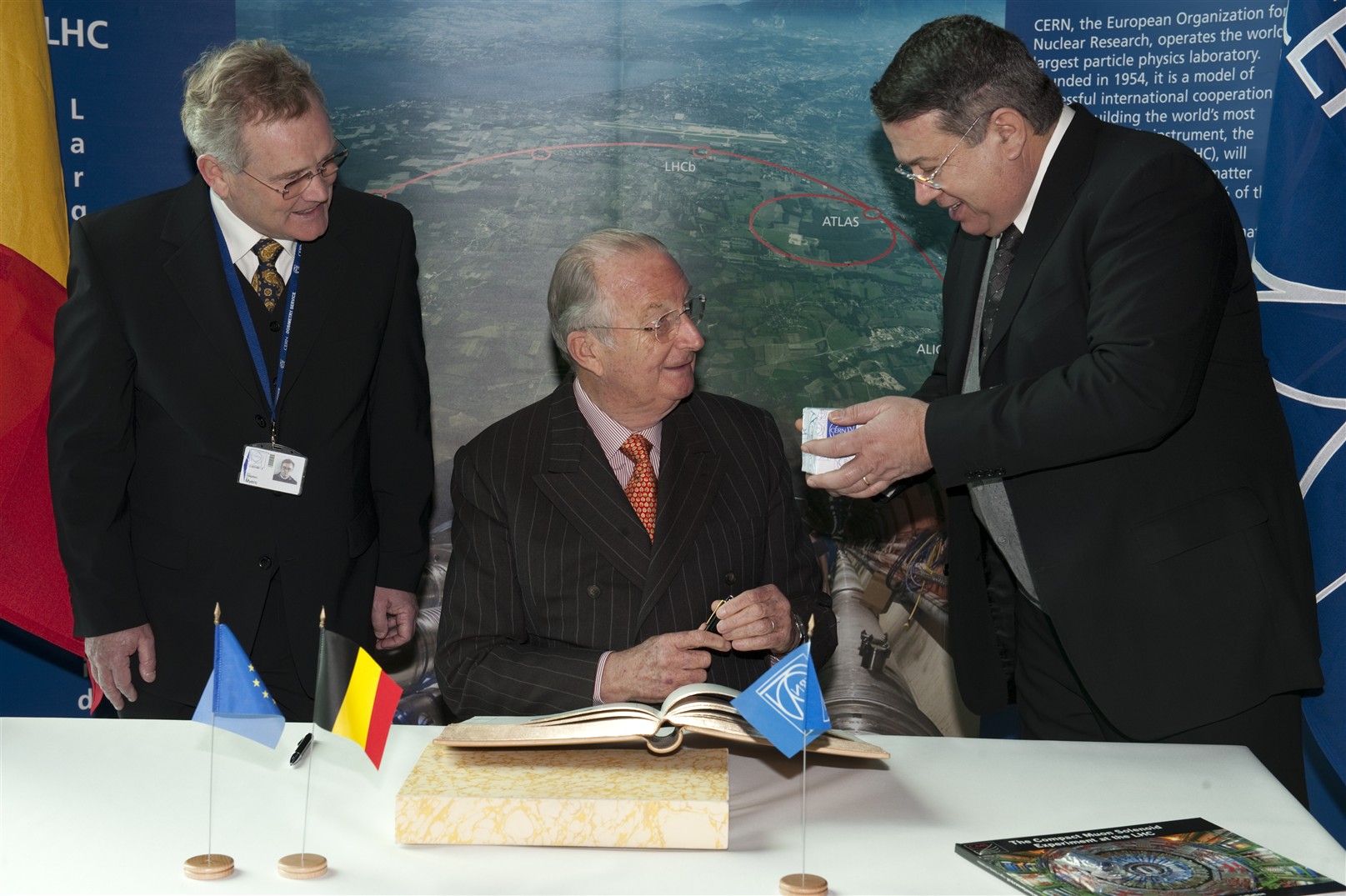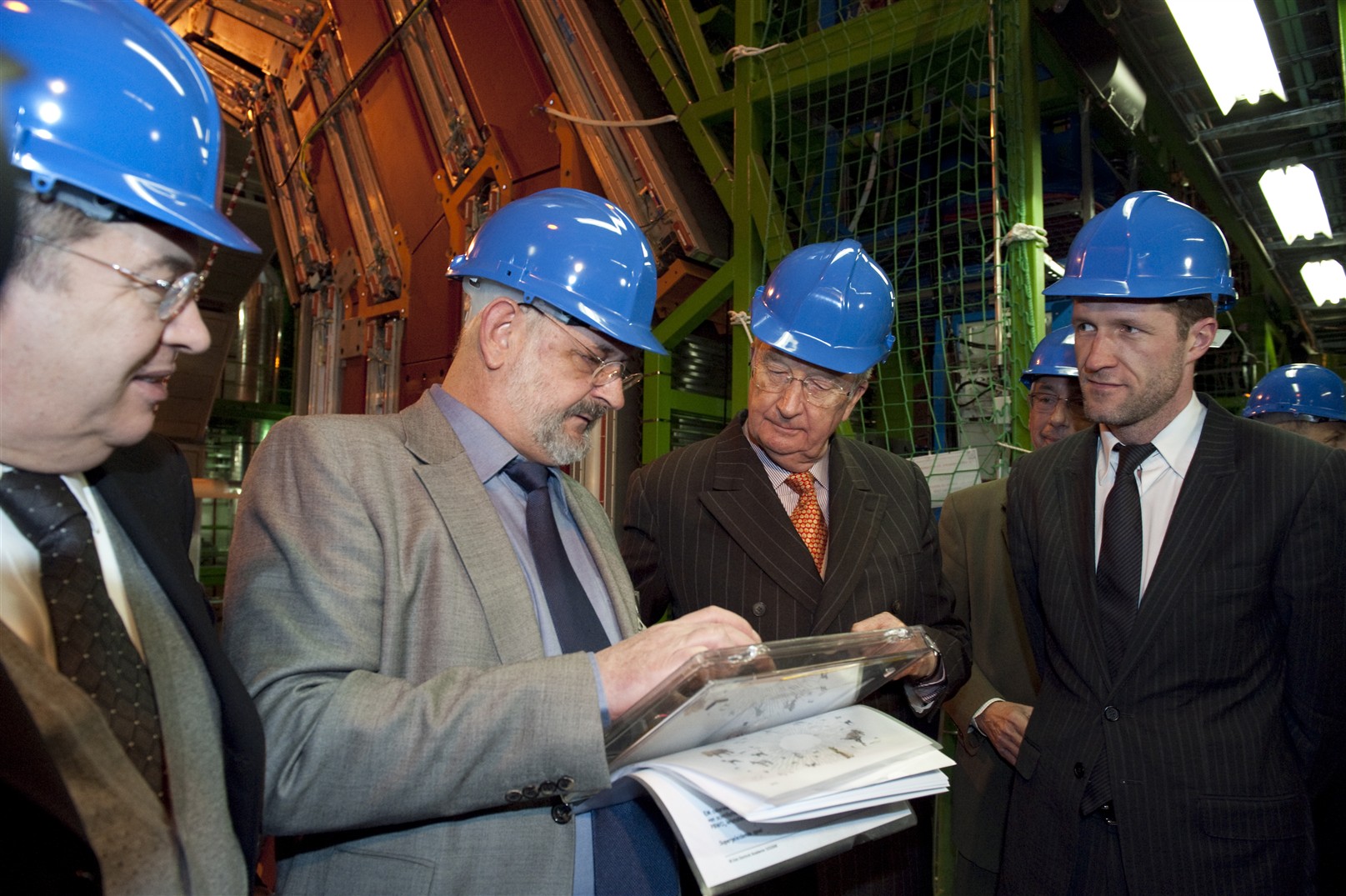A royal visit
On 19 February Albert II, King of the Belgians, visited CERN. He took a very active interest during his tour of the tunnel and the CMS cavern, in particular the pixel detector, which was made in Belgium.
Watch the video!


Arriving at Point 5, the King and his delegation, including the Minister for Climate and Energy, Paul Magnette, were greeted by Sergio Bertolucci, Director for Research and Scientific Computing, representing the Director-General, who gave a short introduction to CERN and highlighted Belgium’s involvement in particle physics and at CERN.
"Congratulations on a remarkable introduction," his Majesty King Albert II said afterwards to Bertolucci. "We are very proud of our countrymen who have collaborated in the study and advancement of science and technology in this very special field."
Belgium was one of the founding members of CERN and has played an important role in CERN’s development. The Director-General from 1976 to 1980, Leon Van Hove, was Belgian. Rober Calilliau, a Belgian computer scientist helped develop the World Wide Web together with Tim Berners-Lee here at CERN. Other notable Belgian physicists include Robert Brout and Francois Englert, who helped formulate a theory for how particles acquire their mass in parallel with Peter Higgs.
The King also took a tour of the tunnel near Point 5, where he was given an explanation of how the LHC works by Lyn Evans and Karel Cornelis. Throughout the tour the King was very animated and asked many questions. The delegation then headed into the CMS cavern guided by Jim Virdee, Walter Van Doninck and Denis Favart, where the King took a particular interest in CMS’s pixel detector, also made in Belgium.
Belgium is very involved in both the CMS experiment and ISOLDE. There are six Belgian universities in the CMS collaboration and in total 120 Belgian staff and 104 users working at CERN. After the tour underground the King came back to the surface to sign the VIP guest book. There was also a small reception held at Point 5 where the King and his delegation had a chance to talk to some of the Belgians working here at CERN.

